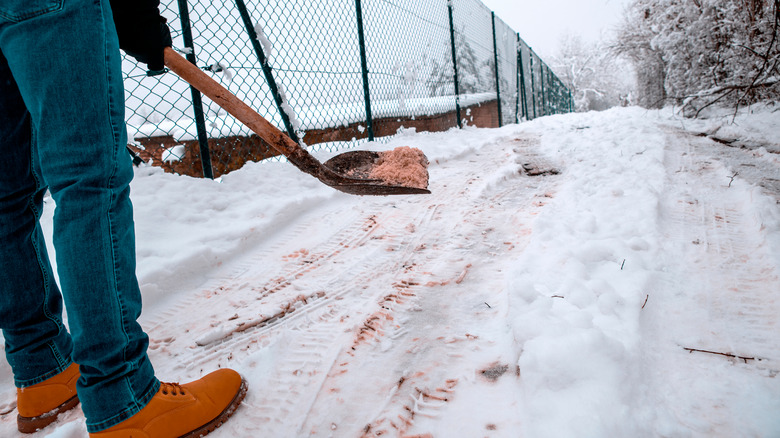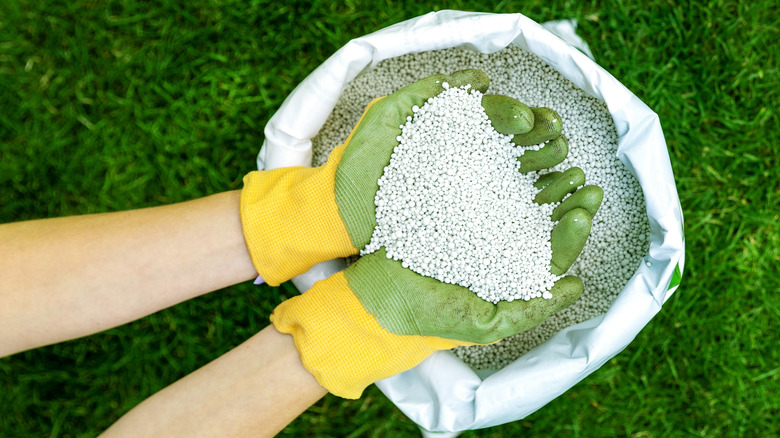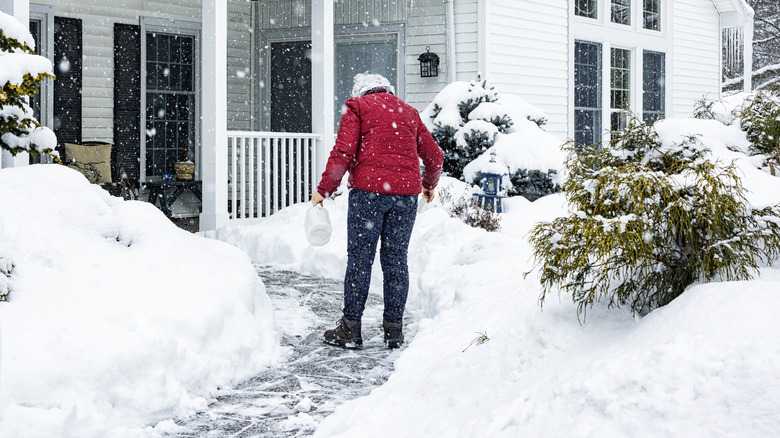Using Leftover Fertilizer To Melt Ice During A Winter Freeze: Good Or Bad Idea?
Certain garden fertilizers that contain potassium chloride, ammonium sulfate, or large amounts of phosphorus or nitrogen, like urea, are capable of lowering the melting point of ice. For this reason, some may use these to de-ice their property in a pinch, but trying this method might be a bad idea. Depending on what type of fertilizer you use to melt ice on your sidewalks or driveway, it may not be particularly effective and could have negative unintended consequences. Fertilizers will typically take longer to melt the ice, some may not work as effectively in areas with lower winter temperatures, and others could end up harming your concrete, lawn, and your local ecosystem.
Urea, which is typically placed in soil to provide more nitrogen to plants, can do serious damage when used for de-icing. Once the fertilizer is washed away by rain or melting snow, it will likely end up in nearby waterways. When urea dissolves in the water, the nitrogen it contains can cause algae blooms to grow faster, which takes away oxygen from fish and other important organisms. Fertilizers containing nitrogen and phosphorus can contaminate waterways, as well.
Why it's a bad idea to use fertilizer to melt ice
Besides possibly polluting nearby waterways, the fertilizer you use to de-ice could prove detrimental to your grass or other outdoor plants. Though it may seem safer to use fertilizer as an alternative to rock salt to melt the ice on your sidewalk, you'll end up needing a large quantity of it. If urea or fertilizers containing potassium chloride or ammonium sulfate get in your grass, they will eventually seep into the soil, and the excess nutrients will burn the plants. Fertilizers that have ammonium sulfate listed in their ingredients are often claimed to be safe for de-icing, but they can actually be worse for your concrete driveway or sidewalks than typical melting salts.
When temperatures drop below 25 degrees Fahrenheit, fertilizers with urea and potassium chloride have a harder time melting ice, making them not very effective for harsh winter freezes. If you have leftover fertilizer sitting in your shed, it's probably best to skip de-icing with it and save it for your garden in the spring.
Alternatives for melting ice in winter
While fertilizer isn't a good choice for a de-icer, there are other options for clearing the snow and ice from your sidewalks. Calcium magnesium acetate is a de-icer that does not contain salt, is biodegradable, and isn't as corrosive as typical melting salts. This makes it safer for your lawn, the environment, and your concrete. Like regular rock salt, you can sprinkle the calcium magnesium acetate right over icy pathways, making it an easy way to melt ice. Unfortunately, this method will likely turn the ice and snow into a sort of slush and can be rather expensive.
If you run out of de-icer for your slippery driveway and need to get out as soon as possible, you might want to consider safer natural options than fertilizers. Though they won't actually melt the ice, leftover cat litter, sawdust, or sand can add a bit of traction, allowing you to walk over the icy area more easily.


